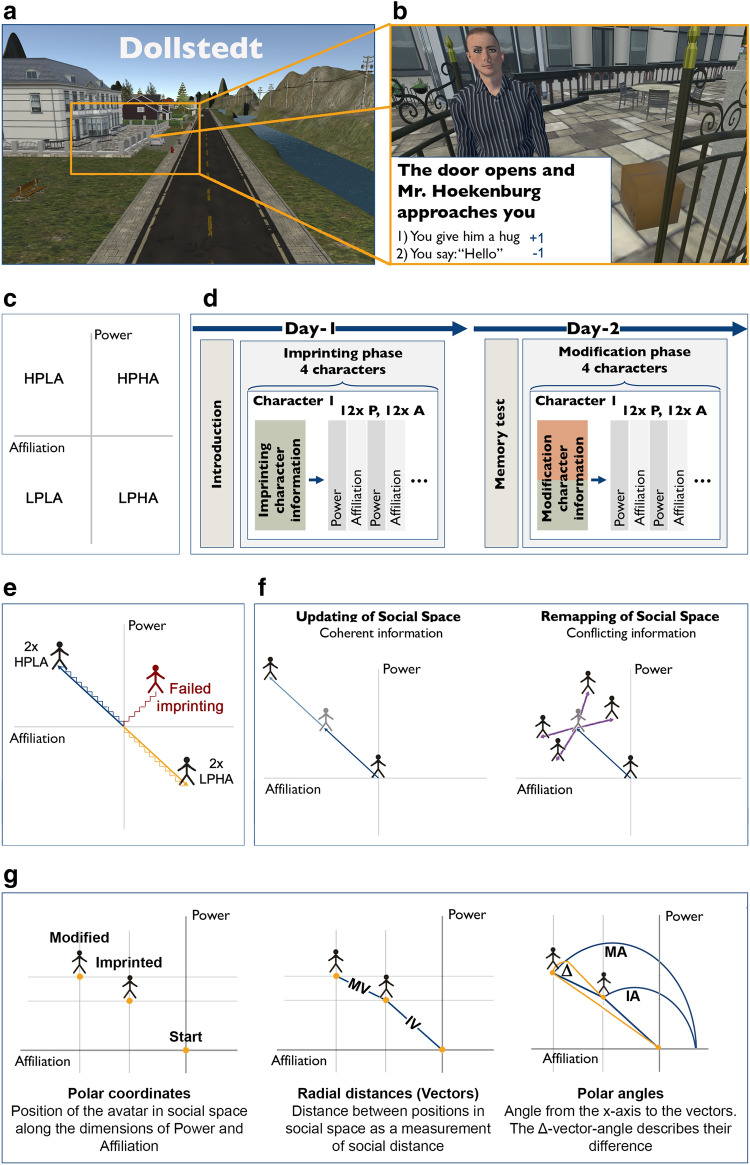Figure 1.
Paradigm and experimental design. (a) Scene from the fictional 3D-virtual reality (VR) city ‘Dollstedt’, where participants interacted with avatars. (b) Example interaction with an avatar: After a narrative (here: ‘You reach the house of Mr. Hoekenburg and ring the bell’), the participant was confronted with the decision of whether or not to hug Mr. Hoekenburg. Here, choosing 1) would add + 1 to the affiliation towards this avatar, choosing 2) would subtract − 1 of the affiliation towards this avatar. (c) Schematic overview of the 4 quadrants of ‘social space’ orthogonalized by the dimensions of power and affiliation. HPLA: high-power/low-affiliation, HPHA: high-power/high-affiliation, LPHA: low-power/high-affiliation, LPLA: low-power/low-affiliation. (d) Detailed timeline of the experiments of testing days 1 and 2. P: power, A: affiliation. (e) Imprinting-phase: n = 2 avatars were imprinted as HPLA (blue) and n = 2 as LPHA (orange). Participants with non-successful imprinting of at least one avatar were omitted (red). HPLA: high-power/low-affiliation, LPHA: low-power/high-affiliation. (f) Modification-phase: n = 1 HPLA- and n = 1 LPHA-avatar showed coherent behavior compared to the imprinting-phase (updating-avatars), whereas n = 1 HPLA- and n = 1 LPHA-avatar showed conflicting behavior compared to the imprinting-phase (remapping-avatars). Different possible scenarios of social remapping are displayed. (g) Overview of the dependent variables of interest: Polar coordinates, radial distances (vectors), and polar angles. MV: modification vector, IV: imprinting vector, MA: modification angle, IA: imprinting angle, Δ: delta angle.

